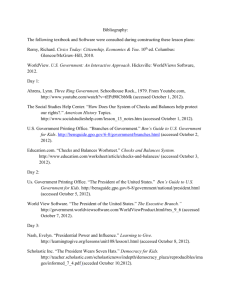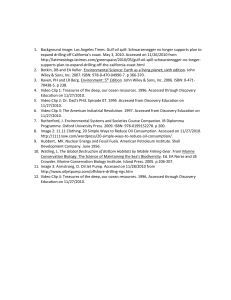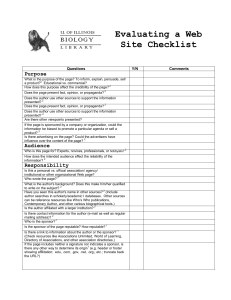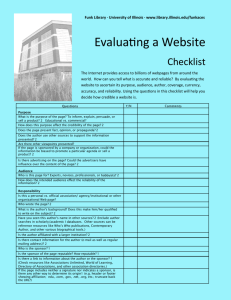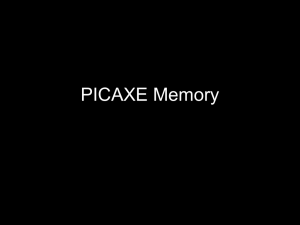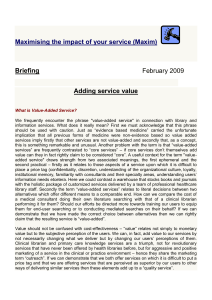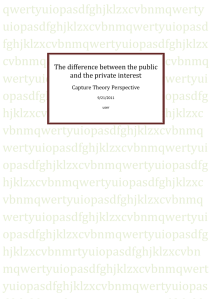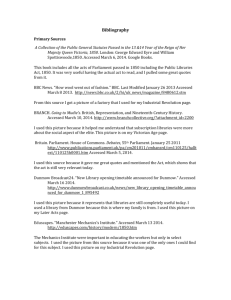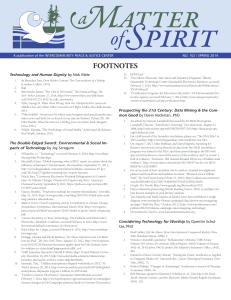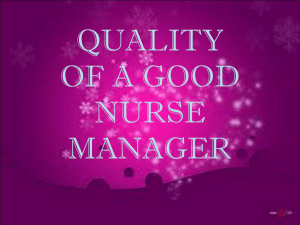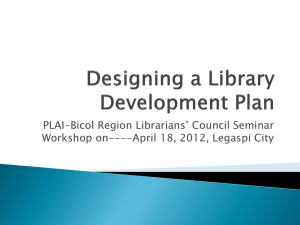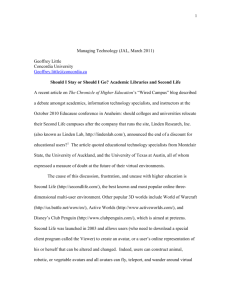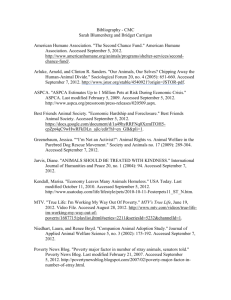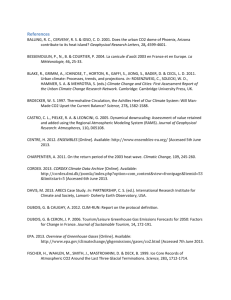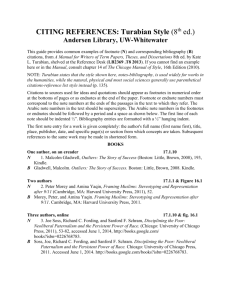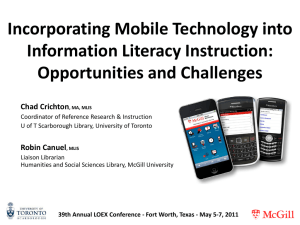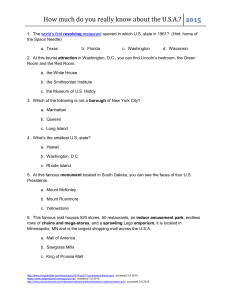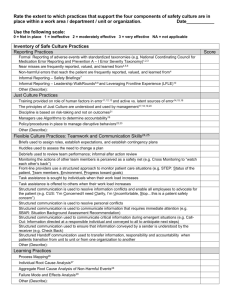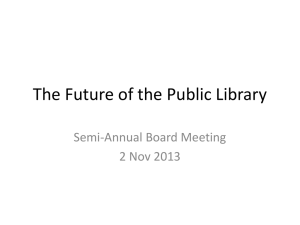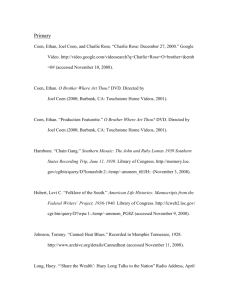docx - Infopeople
advertisement
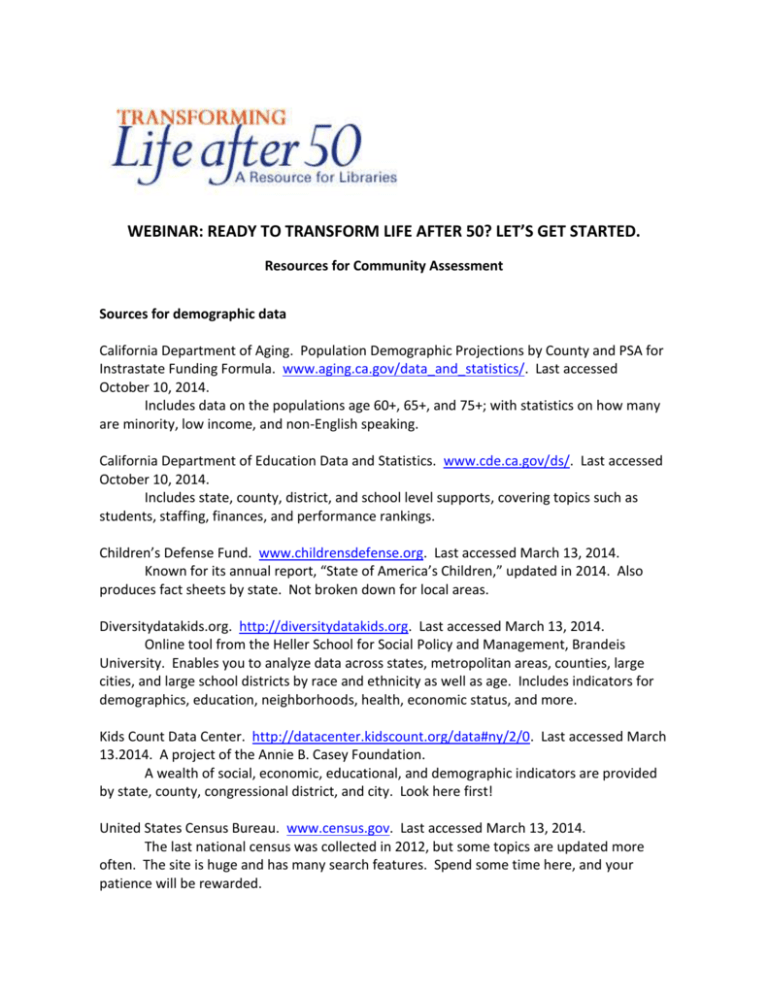
WEBINAR: READY TO TRANSFORM LIFE AFTER 50? LET’S GET STARTED. Resources for Community Assessment Sources for demographic data California Department of Aging. Population Demographic Projections by County and PSA for Instrastate Funding Formula. www.aging.ca.gov/data_and_statistics/. Last accessed October 10, 2014. Includes data on the populations age 60+, 65+, and 75+; with statistics on how many are minority, low income, and non-English speaking. California Department of Education Data and Statistics. www.cde.ca.gov/ds/. Last accessed October 10, 2014. Includes state, county, district, and school level supports, covering topics such as students, staffing, finances, and performance rankings. Children’s Defense Fund. www.childrensdefense.org. Last accessed March 13, 2014. Known for its annual report, “State of America’s Children,” updated in 2014. Also produces fact sheets by state. Not broken down for local areas. Diversitydatakids.org. http://diversitydatakids.org. Last accessed March 13, 2014. Online tool from the Heller School for Social Policy and Management, Brandeis University. Enables you to analyze data across states, metropolitan areas, counties, large cities, and large school districts by race and ethnicity as well as age. Includes indicators for demographics, education, neighborhoods, health, economic status, and more. Kids Count Data Center. http://datacenter.kidscount.org/data#ny/2/0. Last accessed March 13.2014. A project of the Annie B. Casey Foundation. A wealth of social, economic, educational, and demographic indicators are provided by state, county, congressional district, and city. Look here first! United States Census Bureau. www.census.gov. Last accessed March 13, 2014. The last national census was collected in 2012, but some topics are updated more often. The site is huge and has many search features. Spend some time here, and your patience will be rewarded. Resources for learning more about community assessment Durrance, Joan C. and Karen E. Fisher. How Libraries and Librarians Help: A Guide to Identifying User-Oriented Outcomes. Chicago: American Library Association, 2005. While the focus here is on outcomes, there is useful information on understanding users and their needs before setting outcomes. Hacker, Karen. Community-Based Participatory Research. Los Angeles: Sage, 2013. Intended for health care professionals, this book is nevertheless a useful tool for public librarians. There are helpful chapters on defining community, strategies for meaningful engagement with community members, and techniques for gathering data and analyzing the results. Libraries Transforming Communities: Public Innovators Cohort. American Library Association and Harwood: the Institute for Public Innovation. 2014 http://www.ala.org/transforminglibraries/sites/ala.org.transforminglibraries/files/content/L TC_Binder_FINAL_0.pdf Last accessed October 23, 2014. This workbook was developed for training cohorts of library activists in strategies and techniques for turning outward and putting their resources to work for the betterment of the community. McCook, Kathleen de la Pena. A Place at the Table: Participating in Community Building. Chicago: American Library Association, 2000. Urges librarians to get actively involved in community planning and development. Mediavilla, Cindy. Community Assessment Course. Transforming Life After 50. http://www.transforminglifeafter50.org/tools-ideas/assessment-evaluation/communityassessment-course. Last accessed October 21, 2014. Free online asynchronous course on community assessment, developed for the TLA50 Fellowship, conducted in 2010/11. Nelson, Sandra. The New Planning for Results: A Streamlined Approach. Chicago: American Library Association, 2001. The 4th iteration of PLA’s “Planning for Results” process, this version is much streamlined, but is still based on using community input to shape library programs and services. Stringer, Ernest T. Action Research, 4th edition. Los Angeles: Sage, 2014. The advanced course for anyone who wants to learn more about the methods for doing community-based research. Williment, Kenneth. It Takes a Community to Create a Library. Public Libraries, v. 50, no. 2 (March/April 2011), 30-35. http://publiclibrariesonline.org/2013/04/it-takes-a-communityto-build-a-library/. Last accessed on October 21, 2014. Synopsis of the “Working Together Project” (see below), where community development librarians across Canada worked with socially excluded communities to design library services relevant to community members’ needs. Working Together Project, Community-Led Libraries Toolkit (Vancouver, 2008). http://www.librariesincommunities.ca/resources/Community-Led_Libraries_Toolkit.pdf. Last accessed on October 21, 2014. Techniques for working with community members to design relevant and muchneeded library programs/services. Eschews the notion of traditional library outreach and instead promotes “community development.” V. Walter C. Mediavilla 10/14


